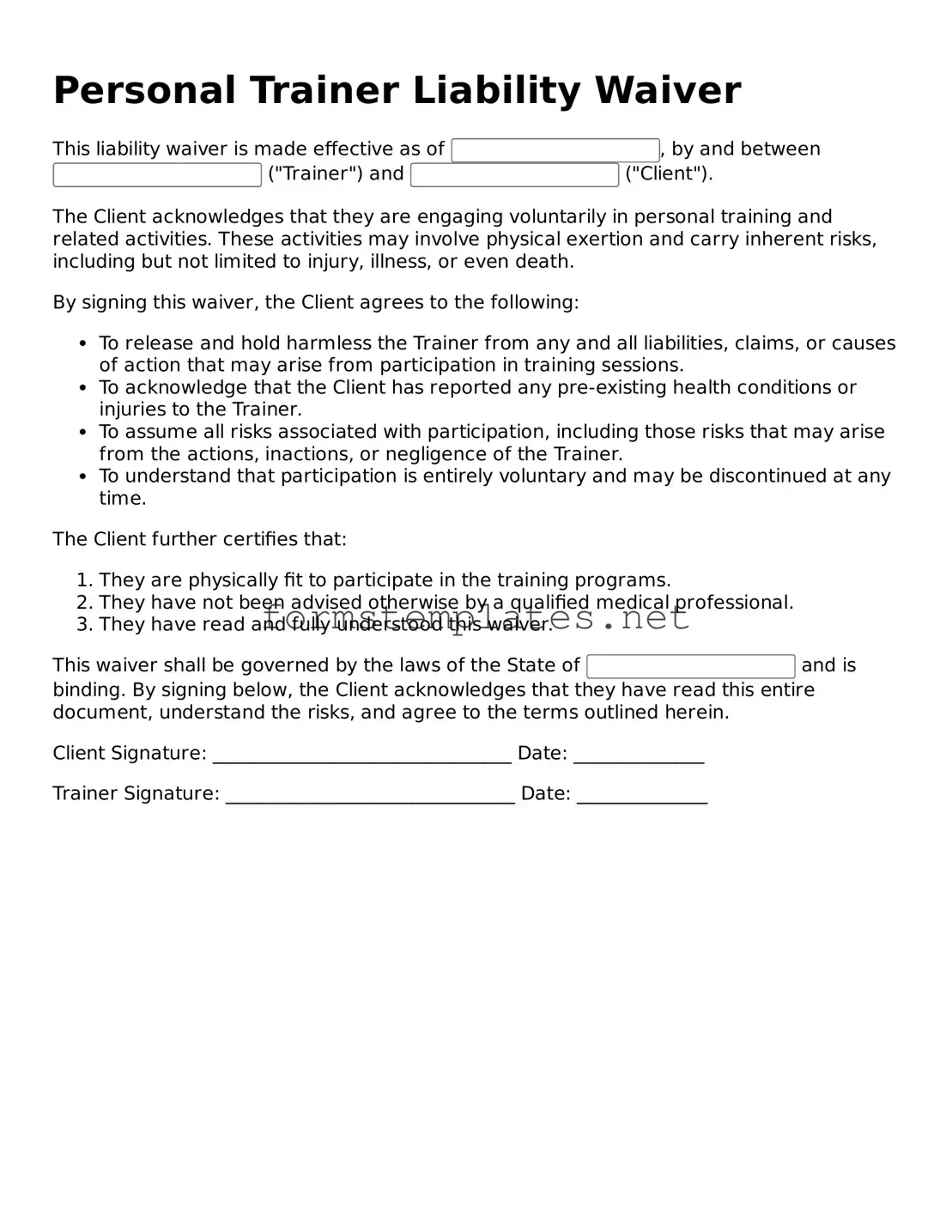A Personal Trainer Liability Waiver form is a legal document that clients sign to acknowledge the risks associated with physical training. By signing this form, clients agree not to hold the trainer or the training facility responsible for any injuries or accidents that may occur during workouts.
Why do I need to sign a waiver?
Signing a waiver is important for both you and your trainer. It helps clarify the responsibilities of each party. By signing, you acknowledge that you understand the risks involved in physical training and accept those risks. This can protect the trainer from legal claims if something unexpected happens.
What types of risks are covered in the waiver?
The waiver typically covers various risks, including but not limited to:
-
Injury from exercise equipment
-
Injury from physical exertion
-
Injury from falls or accidents during training
-
Health complications due to pre-existing conditions
It's essential to read the waiver carefully to understand the specific risks outlined.
Can I still file a lawsuit if I sign the waiver?
While signing a waiver can limit your ability to file a lawsuit, it does not completely eliminate that possibility. If the trainer or facility acts negligently or fails to provide a safe environment, you may still have grounds for a legal claim. Waivers are designed to protect trainers from ordinary risks, not from gross negligence.
What if I have pre-existing health conditions?
If you have pre-existing health conditions, it's crucial to disclose them to your trainer before signing the waiver. The trainer needs to know about these conditions to tailor your workout safely. Failing to disclose such information could complicate matters if an injury occurs.
Is the waiver valid in all states?
The validity of a liability waiver can vary by state. Some states enforce waivers strictly, while others may not uphold them if they are deemed too broad or unfair. It's a good idea to consult with a legal professional if you have concerns about how the waiver may be treated in your state.
What happens if I refuse to sign the waiver?
If you refuse to sign the waiver, the trainer or facility may not be able to allow you to participate in their programs. Most trainers require a signed waiver to protect themselves legally. If you are uncomfortable with the waiver, discuss your concerns with the trainer; they may be able to address them.
Can I change my mind after signing the waiver?
Once you sign the waiver, it is generally considered binding. However, if you have concerns or feel pressured when signing, it's best to communicate those feelings before you sign. If you change your mind after signing, it may be difficult to retract your agreement legally.
Do I need to sign a new waiver for each session?
Typically, you only need to sign one waiver for a specific trainer or facility. However, if you switch trainers or facilities, you may be required to sign a new waiver. Always check with the trainer to understand their specific policies.
What should I do if I have questions about the waiver?
If you have questions or concerns about the waiver, don’t hesitate to ask your trainer for clarification. They should be willing to explain the document and its implications. Understanding what you’re signing is vital for your safety and peace of mind.
